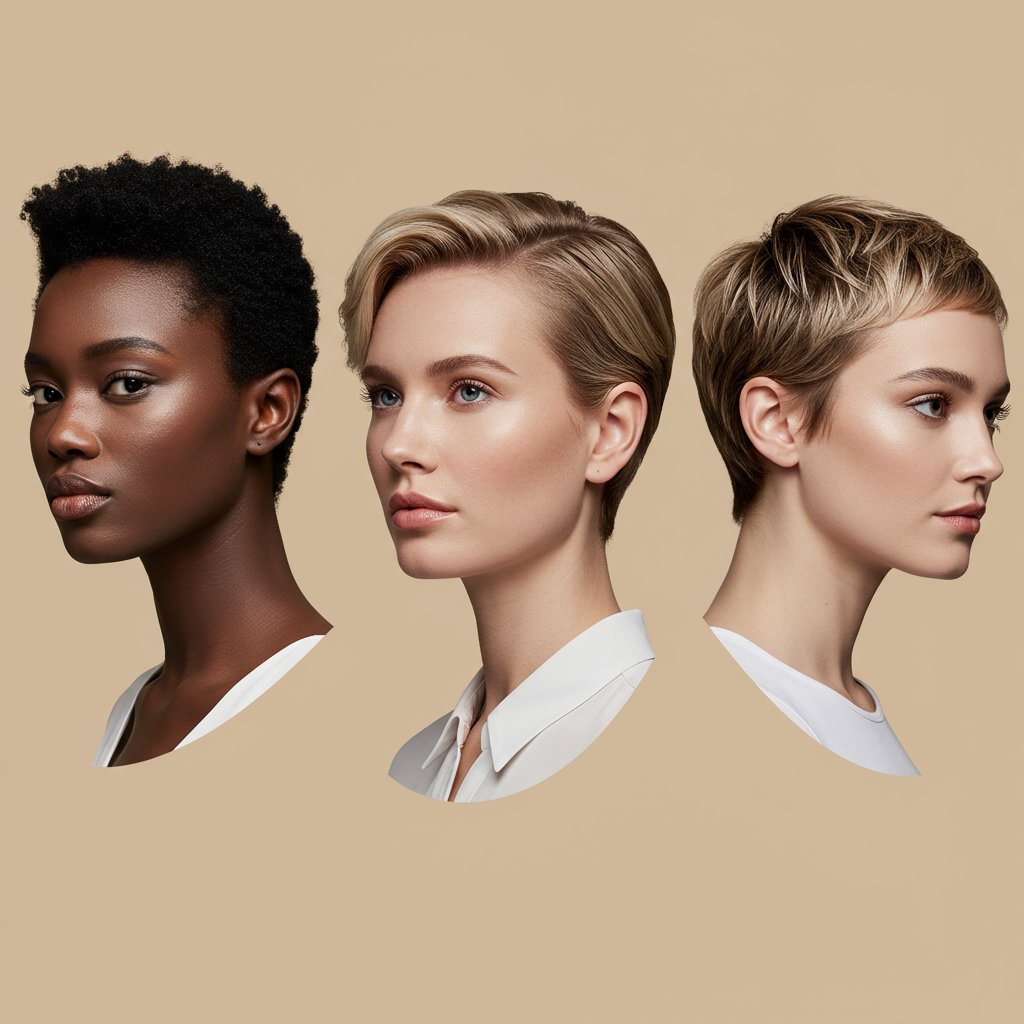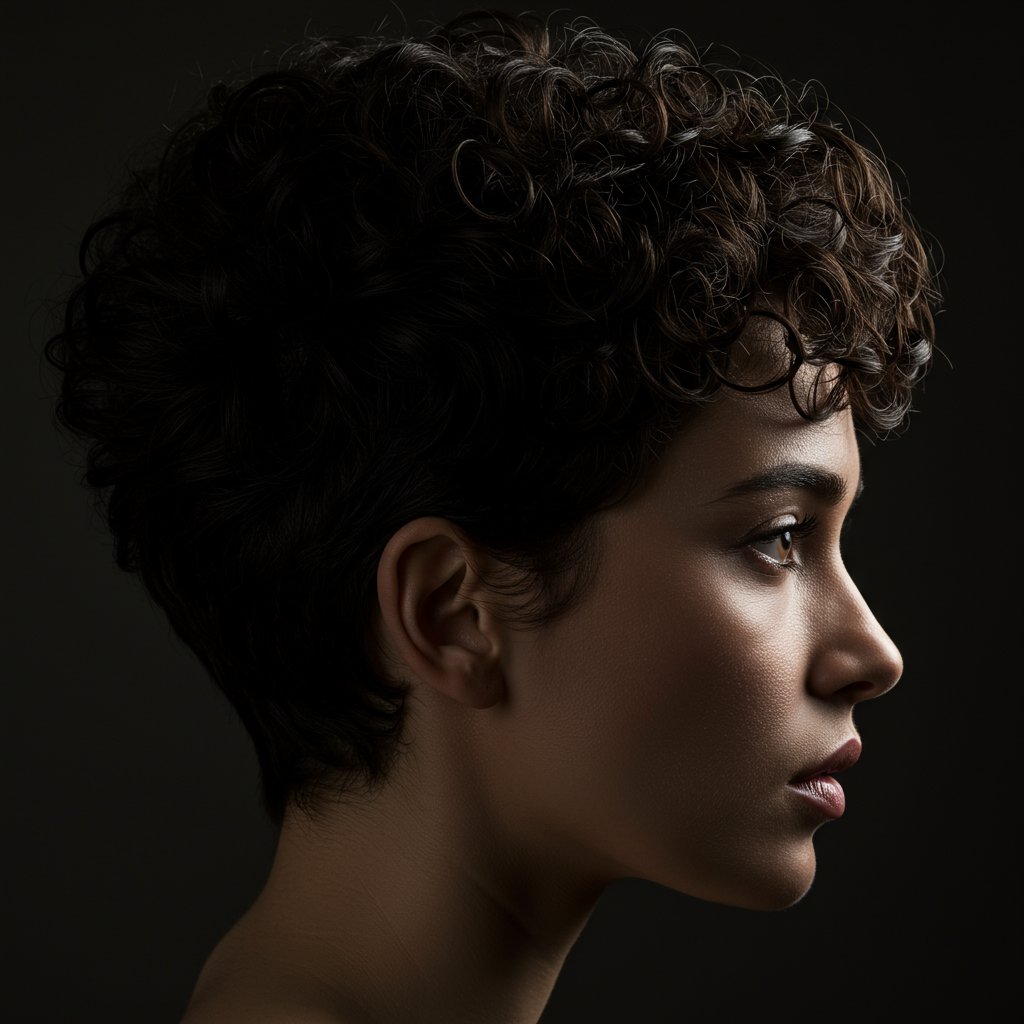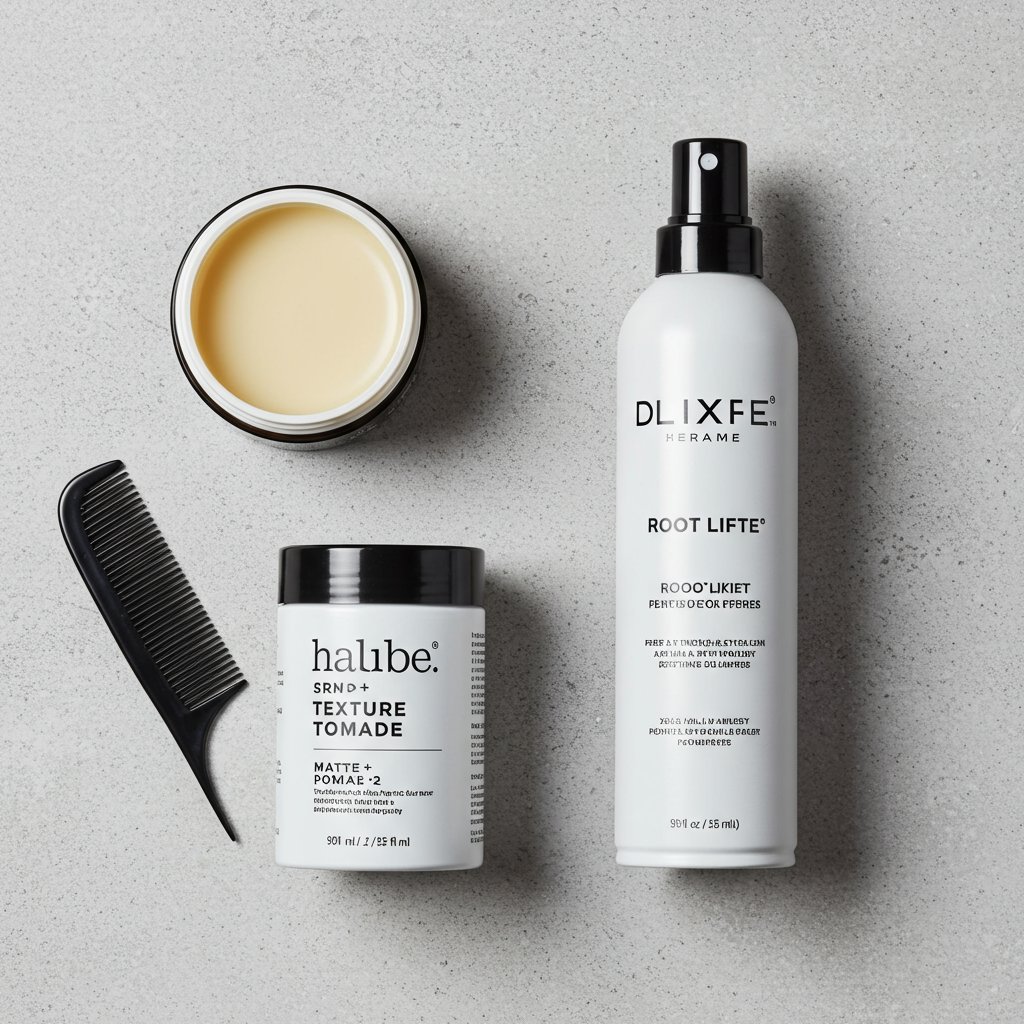The Pixie Cut: A Guide to Finding Your Perfect Cropped Style | Expert Tips
The Enduring Allure of the Pixie Cut: More Than Just a Haircut
The pixie cut is not merely a haircut; it's a statement. For decades, this iconic cropped style has represented confidence, rebellion, and sophisticated chic. From Audrey Hepburn’s gamine charm in Roman Holiday to Mia Farrow’s revolutionary crop in Rosemary’s Baby, the pixie cut has consistently broken conventions and empowered those who wear it. It’s a bold declaration of self-assurance, a style that puts your features—your eyes, your smile, your bone structure—on full display. Choosing to go short is a transformative experience, shedding not just length but also outdated notions of femininity.

In today's fast-paced world, the pixie cut's appeal is stronger than ever. It offers a blend of practicality and high fashion, a wash-and-go ease that doesn't sacrifice an ounce of style. But the modern pixie is far from one-size-fits-all. It has evolved into a spectrum of styles, from soft and feathery to sharp and edgy, ensuring there's a perfect version for every individual. This guide is your definitive resource for navigating the world of cropped hair. We'll explore how to match a pixie to your face shape, work with your natural hair texture, and collaborate with a stylist to achieve the short haircut of your dreams.
Decoding Your Face Shape: The First Step to the Perfect Pixie
The foundation of a flattering pixie cut lies in understanding your unique facial structure. The right cut will create balance, highlight your best features, and harmonize with your natural geometry. While a skilled stylist is your best partner in this process, having a foundational knowledge of what works for your face shape empowers you to have a more productive consultation. The goal is to create the illusion of an oval shape, which is considered the most balanced.

Identifying your face shape is simple: pull your hair back, stand in front of a mirror, and trace the outline of your face with lipstick or a dry-erase marker. Is it long, round, square, or heart-shaped? Once you know, you can explore pixie variations that will be most complimentary. Remember, these are guidelines, not rigid rules. An experienced stylist can adapt any pixie style to suit you, using techniques like texturizing, strategic layering, and fringe placement to customize the look.
Pixie Cuts for Oval Faces
If you have an oval face, congratulations—you've hit the genetic jackpot for hairstyles. This balanced shape can pull off nearly any pixie cut imaginable. From an ultra-short micro pixie to a longer, shaggier version, the options are limitless. You can experiment with bold choices like a sharp undercut or a sleek, side-parted classic style without worrying about throwing off your proportions.Pixie Cuts for Round Faces
For round faces, the key to a flattering pixie cut is creating height and volume on top to elongate the face. A pixie with a deep side part, an asymmetrical fringe, and plenty of texture and lift at the crown will draw the eye upward. Avoid blunt, rounded bobs or styles with heavy volume at the sides, as these can accentuate roundness.Pixie Cuts for Square Faces
Square faces are characterized by a strong jawline. To soften these angles, opt for a pixie cut with texture, waves, and wispy layers. Soft, feathery bangs or a side-swept fringe can break up the strong lines of the forehead and jaw. A slightly longer pixie, often called a "bixie" (pixie-bob), with soft tendrils around the face can be incredibly flattering.Pixie Cuts for Heart Faces
Heart-shaped faces, which are wider at the forehead and taper to a narrower chin, benefit from pixie cuts that add volume at the bottom half of the face. A chin-length pixie bob or a style with bangs that are swept to the side helps to balance the proportions. Avoid styles with excessive volume on top, as this can make the forehead appear wider.Pixie Cuts for Diamond & Long Faces
For diamond faces with prominent cheekbones, a pixie that keeps some softness and volume around the chin area is ideal. Long faces are beautifully balanced by pixie cuts that have volume on the sides and a soft, full fringe or bangs. This helps create an illusion of width, preventing the face from looking longer.Exploring the Spectrum of Pixie Cuts
The term "pixie cut" encompasses a wide and wonderful variety of short hairstyles. The beauty of this cut is its versatility. By altering length, texture, and layering, a stylist can create a look that is uniquely yours. Understanding the different types of pixie cuts will help you communicate your vision more effectively during your salon visit. Bring inspiration photos, but also be open to your stylist's suggestions for adapting a style to your features and hair type.

From the timeless classic to the modern and edgy, each variation offers a different aesthetic. Do you want something polished and professional, or something carefree and rebellious? Are you looking for a low-maintenance style, or do you enjoy daily styling? Considering these questions will help you zero in on the perfect pixie that not only looks great but also fits seamlessly into your lifestyle.
The Classic Pixie
This is the iconic, Audrey Hepburn-esque style. It's short all over, typically with soft, feather-light layers that are slightly longer on top and shorter on the sides and back. It's elegant, timeless, and beautifully showcases the neck and jawline. It requires minimal styling but maximum confidence.The Pixie Bob (or "Bixie")
As the name suggests, the bixie is the perfect hybrid of a pixie and a bob. It features the shorter, layered back of a pixie with the longer, face-framing length of a bob in the front. This is an excellent transitional cut for those who aren't ready to commit to a super-short pixie, offering more styling versatility.The Shaggy Pixie
For a more rock-and-roll, lived-in vibe, the shaggy pixie is the ultimate choice. It's defined by heavy texturizing, choppy layers, and an overall undone look. This style works wonderfully with natural waves and requires a good texture spray to achieve its signature piecey separation.The Undercut or Asymmetrical Pixie
This edgy variation involves shaving or closely cropping the hair on one or both sides (the undercut) while leaving significant length and volume on top. The longer top section can be styled in various ways—swept back, slicked to the side, or spiked up for a dramatic effect. It’s a bold style that makes a powerful statement.The Long Pixie
A longer pixie cut maintains the cropped shape but with more length throughout, especially on top and in the fringe area. This provides ample styling options, from sleek and smooth to voluminous and wavy. It's a fantastic choice for those with thick or wavy hair, as the extra length helps control the volume and showcase texture.Hair Texture and Density: Making the Cut Work for You
Beyond face shape, your hair's natural texture and density are the most critical factors in determining your ideal pixie cut. A common misconception is that pixie cuts are only for those with straight, fine hair. In reality, with the right cutting technique, a pixie can be adapted to flatter every hair type, from fine and straight to thick and curly. A thorough consultation with an experienced stylist is essential; they can assess your hair and recommend a cut that will be easy to manage and grow out gracefully.

Working with your hair's natural tendencies, not against them, is the secret to a low-maintenance, beautiful pixie cut. Forcing curly hair to be stick-straight every day or trying to create massive volume in fine hair is a recipe for frustration. Instead, embrace your texture. A great stylist will use specific techniques, like point cutting, slide cutting, or razor cutting, to enhance your hair's natural movement and create a shape that practically styles itself.
Pixie Cuts for Fine or Thin Hair
For fine hair, the right pixie can create the illusion of incredible volume and thickness. Shorter, blunt layers can make the hair appear denser, while a texturized top adds lift and movement. An undercut can also be a clever trick; by removing some of the hair underneath, the top layers appear fuller by comparison. Avoid heavy use of thinning shears, which can make fine hair look sparse.Pixie Cuts for Thick or Coarse Hair
Thick hair is a fantastic canvas for a pixie cut, but it requires strategic thinning and texturizing to remove bulk and create shape. Without proper technique, a pixie on thick hair can look helmet-like. A stylist will likely use techniques like internal layering or point cutting to create movement and reduce weight, resulting in a beautifully sculpted shape that lies perfectly.Pixie Cuts for Wavy or Curly Hair
Embrace your natural waves and curls with a pixie! A slightly longer pixie cut often works best, as it allows the curl pattern to form without creating too much volume. The key is a stylist who understands how to cut curly hair, often using dry-cutting techniques to shape the hair according to its natural curl pattern. With the right products, a curly pixie can be a stunning, low-maintenance wash-and-go style.The Consultation: Collaborating with Your Stylist for Pixie Perfection
The single most important step in your pixie cut journey is the consultation. This is not just a quick chat before the shampoo; it's a dedicated collaboration between you and your stylist to create a shared vision for your new look. A great stylist won't just look at your inspiration photos; they will analyze your hair texture, bone structure, and hairline, and discuss your lifestyle and styling habits to design a cut that is 100% tailored to you.

Come prepared for this appointment. Gather a collection of photos of pixie cuts you love, but also be ready to point out what you don't like. Think about your daily routine. How much time are you willing to spend on your hair each morning? Do you use heat tools? What is your budget for maintenance appointments? Communicating this information clearly ensures there are no surprises and that you leave the salon with a haircut you not only love but can also realistically maintain.
Styling Your New Pixie: Tools, Products, and Techniques
One of the biggest perks of a pixie cut is the reduced styling time, but that doesn't mean no styling at all. Having the right products and tools on hand is key to unlocking your pixie's full potential. The goal is to enhance the cut's shape and texture. You'll likely need to trade in your large round brushes and heavy conditioners for a new arsenal of styling heroes. Your stylist can provide personalized recommendations, but some staples are universally beneficial for short hair.

A small amount of the right product goes a long way. Start with a pea-sized amount and add more as needed to avoid weighing the hair down. For products like pomade or wax, warm it up between your palms first to ensure even distribution. Experiment with different techniques to find what works for you. Some days you might want a sleek, polished look, while other days call for a messy, textured vibe. The versatility is part of the fun of having a pixie cut.
Essential Products for Pixie Cuts
- Pomade or Wax: Provides texture, definition, and flexible hold. Perfect for creating that piecey, separated look.
- Texture Spray: A must-have for adding grit, volume, and an effortlessly undone finish. Use on dry hair.
- Root Lifter or Mousse: Applied to damp roots before blow-drying, this creates volume and height at the crown.
- Light-Hold Hairspray: Tames flyaways and sets your style without making it feel stiff or crunchy.
- Heat Protectant: Essential if you use any heat tools, like a mini flat iron, to protect your strands from damage.
Maintaining Your Masterpiece: The Pixie Cut Upkeep Schedule
While a pixie cut simplifies daily styling, it does require more frequent maintenance to keep its shape. Short hair grows out quickly, and what was a perfectly sculpted pixie can look shapeless and overgrown in just a few weeks. To keep your cut looking sharp and intentional, you'll need to commit to a regular trimming schedule. This is a crucial part of the pixie cut lifestyle.

Most pixie wearers find they need a trim every 4 to 6 weeks. This regular visit to the salon ensures the lines stay clean, the layers stay blended, and any bulk is removed. If you have an undercut or a very precise, short style, you might even need a touch-up every 3 weeks. Factor this commitment of time and budget into your decision. Regular trims also keep your hair healthy by removing split ends, ensuring your short style always looks its best.
Quick Tips for a Perfect Pixie
- Don't Skimp on Scalp Care: With short hair, your scalp is more exposed. Use a quality shampoo and conditioner, and consider a weekly scalp treatment to keep it healthy.
- Play with Color: A short haircut is the perfect canvas for experimenting with bold hair color. Since you're trimming it often, you can play with bleach or vibrant shades with less long-term commitment.
- Accessorize: Headbands, statement earrings, and bold makeup all pop when you have a pixie cut. Have fun drawing attention to your features.
- Sleep on Silk: A silk or satin pillowcase can help reduce frizz and prevent your hair from getting messed up overnight.

Frequently Asked Questions About the Pixie Cut
1. Is a pixie cut high maintenance?
It's a trade-off. Daily styling is very low maintenance (often just a few minutes), but it's high maintenance in terms of frequent salon visits for trims (every 4-6 weeks) to maintain the shape.2. Will a pixie cut make me look older?
A well-executed pixie cut does the opposite! By opening up the face and highlighting the cheekbones and jawline, a pixie often has a lifting, youthful effect. The key is choosing a modern, textured style rather than a dated, helmet-like cut.3. Can I get a pixie cut if I have curly hair?
Absolutely! A pixie cut can look incredible on curly hair. It's all about finding a stylist experienced in cutting curls. They will likely cut it dry to work with your natural curl pattern, creating a beautiful shape that reduces bulk and is easy to manage.4. What is the process of growing out a pixie cut like?
Growing out a pixie requires patience and a plan. You'll go through several stages, from a longer pixie to a shaggy bob, then a classic bob, and so on. Regular trims to reshape the hair as it grows are essential to avoid the dreaded "mullet" phase. Fun accessories like clips and headbands can be your best friend during this process.5. Do I need a certain personality to pull off a pixie cut?
Confidence is the only prerequisite! A pixie cut is a statement of style and self-assurance. If you love the look and feel excited about the change, you have everything you need to rock a pixie cut with flair.Conclusion: Embrace the Freedom of the Crop
The pixie cut is more than a hairstyle—it's an expression of confidence, a nod to timeless style icons, and a practical choice for the modern individual. It's a versatile, liberating cut that can be customized to flatter any face shape, complement any hair texture, and fit any personality. From understanding your facial geometry to choosing the right variation and committing to its upkeep, the journey to your perfect pixie is a rewarding one.
By collaborating with a professional stylist, you can ensure your transition to a cropped style is a resounding success. They are your partner in crafting a look that not only highlights your best features but also aligns with your lifestyle. So, if you've been contemplating the chop, consider this your sign. Embrace the freedom, the ease, and the undeniable chic of the pixie cut. It might just be the most empowering hair decision you ever make.


